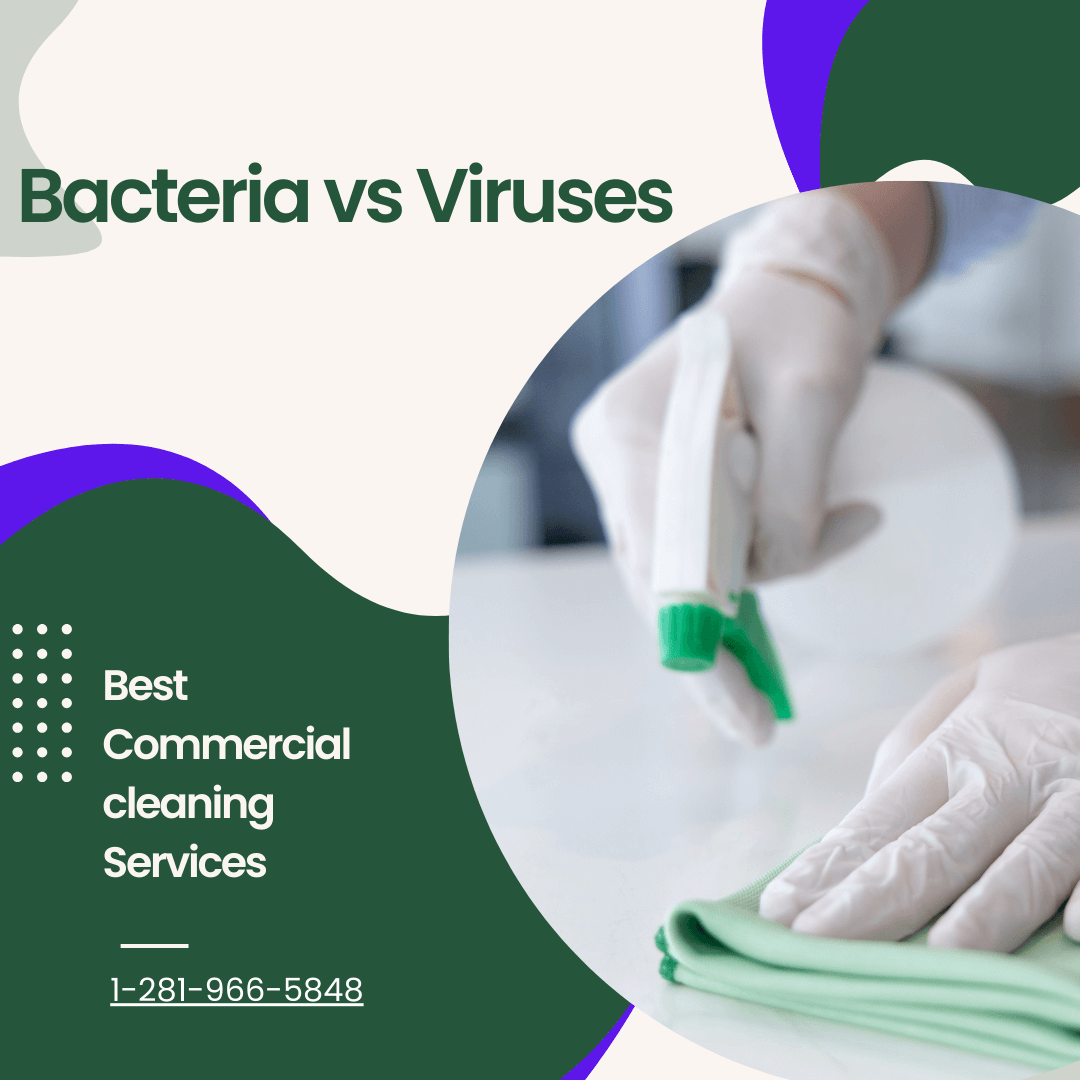Maintaining a clean and healthy environment requires a clear understanding of the difference between bacteria and viruses.
For effective cleaning practices removing Bacteria and viruses:
1. Bacteria vs Viruses:
- Bacteria and viruses are both microscopic organisms, but they differ significantly in structure, replication methods, and the diseases they cause. Understanding these differences is essential for implementing targeted cleaning measures.
2. What is Bacteria?
- Bacteria are single-celled organisms with a simpler structure compared to viruses. They can live independently, reproducing through cell division. While some bacteria can cause infections, many are beneficial and play vital roles in processes like digestion.
3. What are Pathogens?
- Pathogens are disease-causing agents, and bacteria are one category of pathogens. Not all bacteria are harmful, but certain strains can lead to illnesses. Effective pathogens cleaning involves targeting harmful bacteria while preserving the beneficial ones.
4. What is a Virus?
- Unlike bacteria, viruses are not complete cells. They consist of genetic material (either DNA or RNA) surrounded by a protein coat. Viruses require a host cell to replicate and cause infections in various organisms.
5. Understanding the Differences:
- Treatments: Bacterial infections are often treated with antibiotics, while viral infections may require antiviral medications.
6. Importance of Distinguishing Between Bacteria and Viruses:
- Proper cleaning protocols depend on understanding the nature of the microorganisms present. Bacterial infections may require disinfectants, while controlling viruses may involve antiviral measures.
7. Effective Cleaning Strategies:
- Antiviral Measures: Viruses require specific antiviral cleaning agents. Ensuring surfaces are regularly disinfected is essential to prevent the spread of viral infections.
8. Importance in Healthcare Settings:
- In healthcare settings, distinguishing between bacteria and viruses cleaning is critical. Different cleaning measures are implemented to control infections caused by each type of microorganism.
9. Conclusion: Tailoring Cleaning Practices for a Healthier Environment:
- Understanding the distinction between bacteria and viruses is fundamental to implementing effective cleaning practices. Tailoring cleaning measures to the specific characteristics of these microorganisms ensures a healthier and safer environment. Whether in homes, offices, or healthcare facilities, this knowledge guides the selection of appropriate cleaning agents, contributing to the overall well-being of the space.


